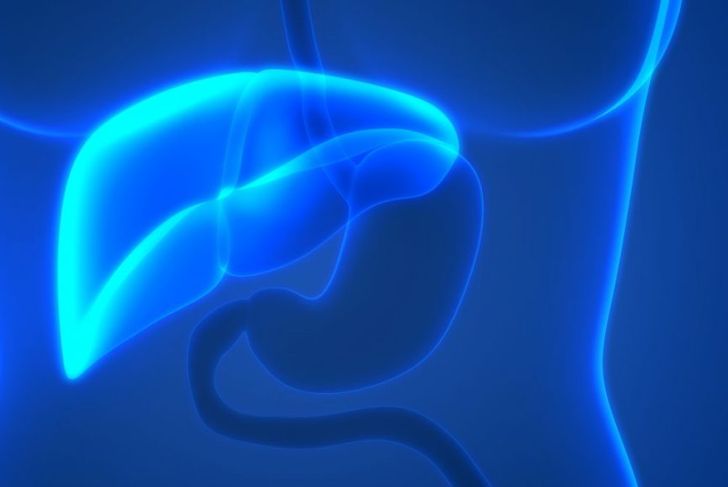A hepatic adenoma or HCA is a rare, benign liver tumor made up of epithelial cells. Hepatic adenomas — also known as hepatocellular adenomas or hepadenomas — are usually present in people with normal, healthy livers in all other aspects. Hormones play a large role in the development of hepatic adenomas, and there is a strong correlation between the dose and duration of hormonal therapy and the growths.
Risk Factors for Hepatic Adenoma
The biggest risk factor for hepatic adenoma is long-term use of oral contraceptives and hormonal therapy. Other risk factors include metabolic diseases such as tyrosinemia, glycogen storage disease, and type 1 diabetes mellitus. Other medications that influence circulating hormones, such as barbiturates and anabolic or androgenic steroids, also carry a slight risk.
Symptoms
HCAs almost always develop in the right hepatic lobe. Fewer than half of the people with an HCA report pain and many are asymptomatic, though a noticeable mass may appear if the growth is large. Usually, only one hepatic adenoma develops. Multiple benign tumors throughout the liver is a different condition called liver cell adenomatosis, the cause of which does not appear to be contraceptives or hormonal changes.
Oral Contraceptives
Oral contraceptives or OCPs became available in the 1960s. Researchers first documented the association between hepatic adenomas and contraceptives in 1973. Hepatic adenomas were rarely seen before the 1960s, but the occurrence of HCAs has been steadily rising over the last several decades. Numerous studies confirm the association of hepatic adenomas with oral contraceptives and other hormonal therapies or medications.
Frequency
Approximately 30 to 40 out of every one million women who use oral contraceptives long-term develop a hepatic adenoma, but only one out of every 1,000,000 women receive the diagnosis without ever having taken the medication. Studies state women over the age of 30 taking OCPs for more than 25 months have the highest risk of developing HCAs overall, especially if the contraceptives contain large doses of estrogen.
Diagnosing a Hepatic Adenoma
Doctors diagnose hepatic adenoma with various imaging techniques, including ultrasounds and CT scans. Several types of benign liver tumors have a similar appearance, and doctors may use multi-phase contrast-enhanced imaging through a CT scan or MRI to see more detailed images that can distinguish between the types of growths. A liver biopsy will offer a final, definitive diagnosis.
Complications
It is important for medical care providers to distinguish hepatic adenomas from other benign liver tumors. HCAs can sometimes lead to cancerous tumors. Other complications include spontaneous hemorrhage and abdominal rupture. Tumors may shrink and eventually disappear entirely after the patient ceases use of oral contraceptives, but there are also cases of liver cancer developing years later, even when the woman stopped using the contraceptive.
Treating a Hepatic Adenoma
Treatment depends on the size of the hepatic adenoma and the person’s overall health. Obesity, chronic illness, and other factors increase the risk of negative outcomes during or after surgery. The physician considers risk factors related to the HCA and surgery to decide the best course of action. The tumors can be anywhere from a half inch to eleven inches in size. The doctor will encourage immediate disuse of oral contraceptives upon discovery of any HCA. He or she may choose to simply monitor small lesions under two inches, taking no other action unless it continues to grow.
Surgical Resection
HCAs larger than two inches are usually treated with surgical resection or removal. Large HCAs are more likely to rupture and hemorrhage, or progress to liver cancer. A tumor six to eight inches or larger may also damage surrounding liver tissue.
Risk During Pregnancy
Hepatic adenomas often grow quickly during pregnancy. The rapid growth may cause the encapsulated tumor to burst, leading to internal bleeding. A liver hemorrhage from the burst HCA can be fatal. Treatment of HCAs during pregnancy varies. Some physicians choose to monitor the tumor and do not recommend surgery unless rapid growth occurs. Other medical professionals recommend surgical removal for any HCA discovered during pregnancy to avoid severe complications.
Bordeaux Classification
The Bordeaux classification is a system to determine subtypes and risk factors of HCAs. There are four distinct subtypes: inflammatory HCAs make up 40 to 50% of all HCAs, and 35 to 40% of HCAs are in the HNF1α-inactivated subtype. The other two classifications are β-catenin–activated and β-Catenin–activated inflammatory. Any HCAs that don’t fit in these categories are “unclassified.” These classifications are vital in guiding treatment. Genetic mutations identified in the subtypes provide information to judge whether the tumor will experience benign growth or progress to malignancy.

 Home
Home Health
Health Diet & Nutrition
Diet & Nutrition Living Well
Living Well More
More




















